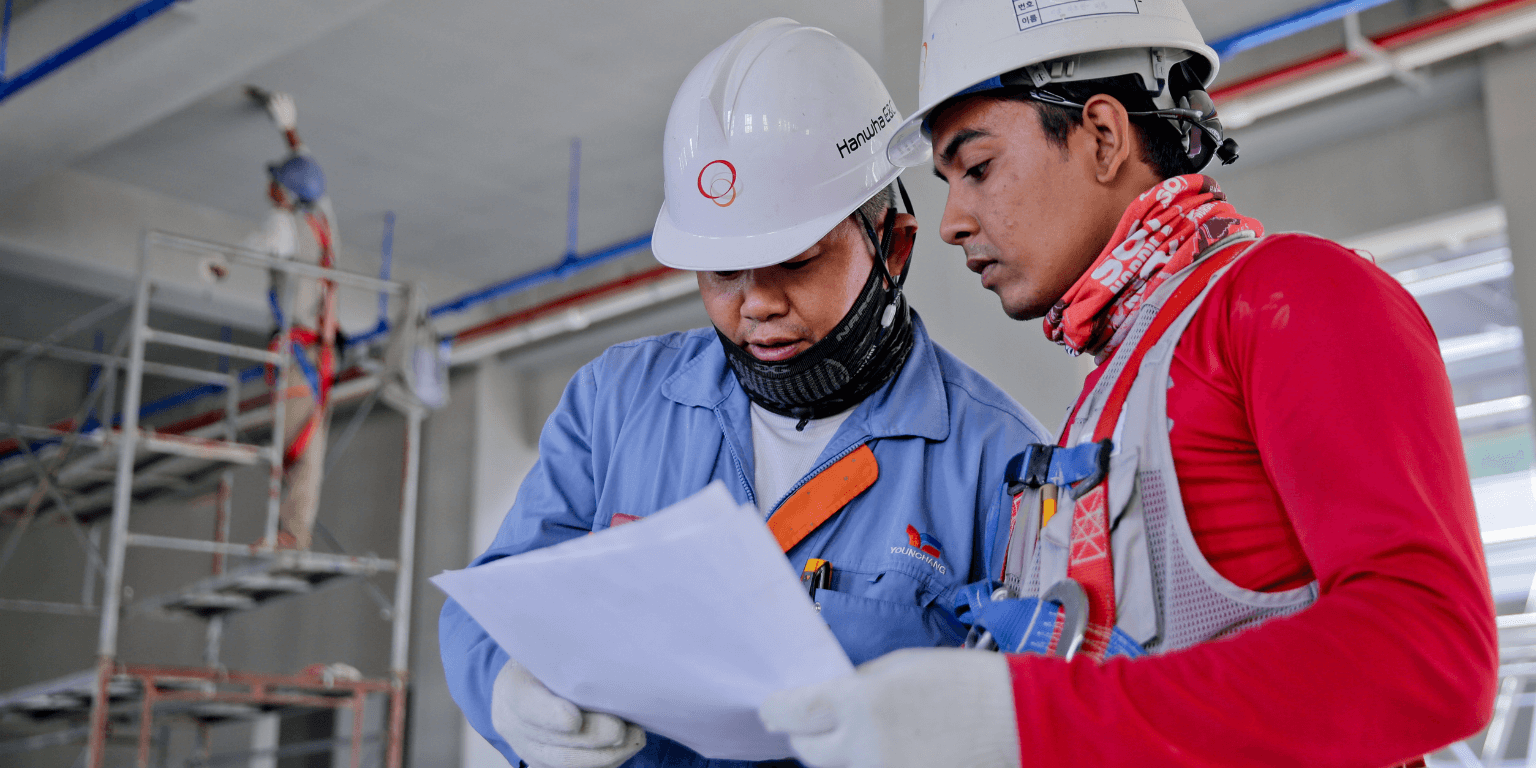Top Tips For Staying Safe And Healthy At Work
25 Oct, 20213:50October is National Safe Work Month in Australia and in honour of this, we’re prov...

October is National Safe Work Month in Australia and in honour of this, we’re providing you with our top tips for staying safe and healthy whilst you’re at work.
Whatever industry you work in, from Renewable Energy to Life Science, your safety is of the utmost importance – everyone is entitled to work in a safe environment. Under health and safety law, employers are primarily responsible for ensuring your workspace is fit for purpose. However, there are also safety measures you can take to be proactive and manage risks.
Think safe – looking after your mental wellbeing
Being healthy and safe at work doesn’t just mean mitigating injury risks, it also means taking care of your own (and your colleague’s) mental wellbeing.
Throughout the COVID-19 pandemic, many have faced new challenges in the form of adapting to working from home. If you’re not used to working from home, it can be difficult to stay productive and healthy. To look after your mental wellbeing, consider:
1. Setting a daily routine
Plan out your day according to tasks you’d like to complete. Use a diary or online calendar to plan out your work schedule, making time for regular breaks and lunch.
It might be tempting to work into the evenings but try to stick to your normal work hours to ensure your work-life balance is not affected.
2. Prioritising your work-life balance
When you focus too much on work it’s easy to lose perspective. What should be minor hurdles in the workplace become major aggravations - for example, a project off schedule, a change in your position, a business decision you disagree with, etc. If you’ve ever found yourself losing sleep over issues such as these, or feeling overwhelmed, angry, or upset about them, you’re not alone.
Spending too much time working or thinking about work can have negative effects. So, it’s important to cut yourself off from it when you can. Consider setting boundaries such as switching off at the end of the workday and not thinking about work until the next day.
Communication is vitally important to ensure your employer has visibility of your workload and can help if you do find you’re struggling to manage what’s expected of you.
3. Allocating a dedicated workspace within the home
You may enjoy working from your sofa or bedroom, but it’s important to create a dedicated workspace that’s separate from your living area or relaxing spaces. If you have a desk, set up a comfortable workstation there. If not, consider using a dining table instead. If you share your home with family, finding a quiet space where you’re less likely to be disturbed is essential.
4. Taking regular breaks to exercise
It’s vitally important to look after your mind and body whilst working from home. Take time out of your day to keep active by stretching, meditating, or having a lunchtime workout to keep your energy levels up.
Work safe – being aware of workplace risks
An important part of staying safe in the workplace is identifying workplace risks. By understanding what a “risk” looks like and how you affect those around you, you’re already making positive steps.
Workplace risks include:
Safety hazards such as inadequate machine guards, unsafe conditions and unsafe practices.
Biological hazards caused by organisms such as viruses, bacteria, fungi and parasites.
Chemical hazards caused by a solid, liquid, vapour, gas, dust, fume or mist.
Ergonomic hazards caused by anatomical, physiological, and psychological demands on the worker, such as repetitive and forceful movements, vibration, temperature extremes, and awkward postures arising from improper work methods and improperly designed workstations, tools and equipment.
Physical hazards caused by noise, vibration, energy, weather, heat, cold, electricity, radiation and pressure. Once you’ve identified the possible risks, you can perform your own risk assessment. This involves determining what items or areas are most likely to develop unsafe or unhealthy conditions due to factors such as stress, wear, impact, vibration, heat, corrosion, chemical reaction, or misuse.
To identify risks, look at all workplace elements - the environment, the equipment, and the process:
The environment includes noise, vibration, lighting, temperature, and ventilation.
Equipment includes materials, tools, and apparatus for producing a product or a service.
The process involves how the worker interacts with the elements of a task.
Is everything as it should be? If not, your last step is to report any safety issues to your manager or compliance department.
Also, take particular care not to overlook areas where work does not usually occur such as car parks (parking lots), rest areas, office storage areas and locker rooms – health and safety breaches, can still occur here.
Be safe – follow safety instructions
Staying safe and healthy in the workplace is an ongoing process of managing and monitoring risks – it’s not a one-off task!
Although It’s your employer’s responsibility to create health and safety policies and ensure workers are trained to do their jobs safely, it’s your responsibility to ensure you always follow their safety instructions, making sure to seek help if there are areas or topics you don’t understand.
In certain roles, you may be provided safety equipment otherwise known as ‘personal protective equipment’ (PPE). This is provided for a reason and should always be worn or used as instructed. Using your PPE correctly will protect you against the risks associated with your environment and reduce your exposure to hazards that can be prevented. You should also take note of when your PPE needs replacing or if there’s any visible wear and tear – don’t take the risk, get it replaced.
By taking the time to look after your mental wellbeing, identifying any workplace risks and always following the safety instructions set by your employer, you’ll be well on your way to staying safe and healthy whilst at work.
NES Fircroft and staying safe
Health and safety at work is a top priority at NES Fircroft, not only with our internal staff but also with the 20,000 contractors we look after across the globe. If you're a contractor looking for a new role, check out our latest job vacancies and find out how we can support you in furthering your career goals or whilst you’re on assignment








